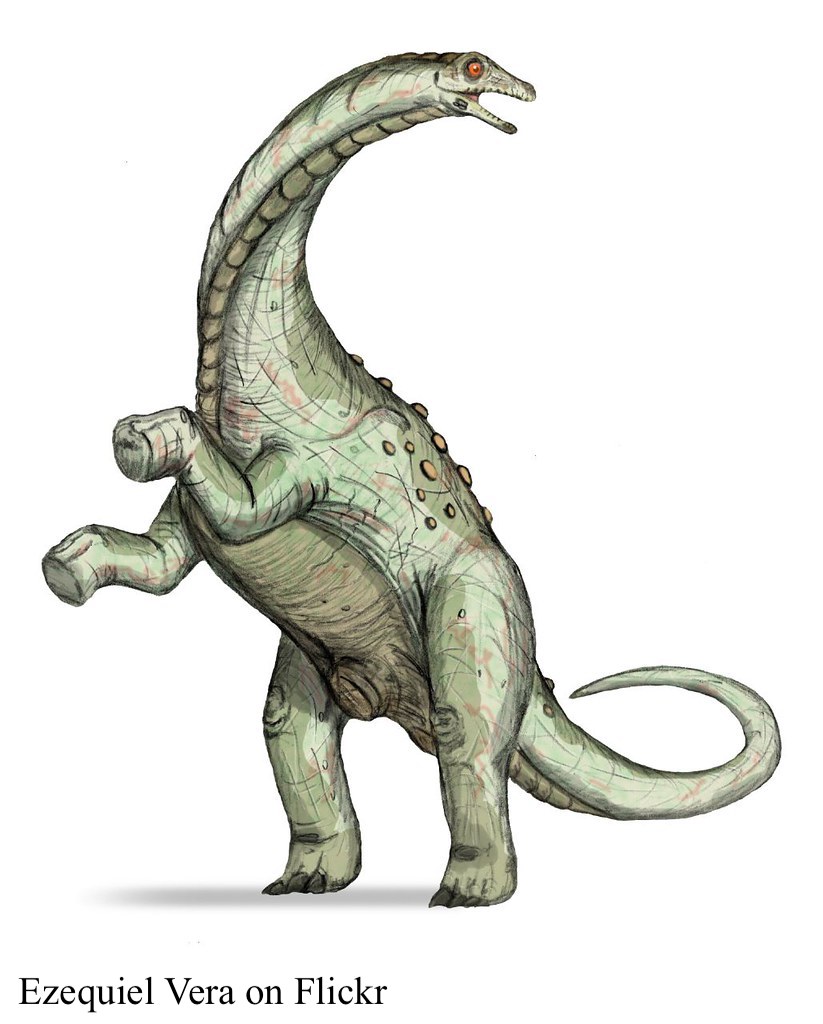Welcome to Adamantisaurus

Name Definition
Adamantina lizard
Name Given By
Rodrigo Santucci & Reinaldo Bertini, 2006
Location
Adamantina Formation in Bauru Basin of São Paulo state, southeastern Brazil
Classification
Dinosauria, Saurischia, Sauropodomorpha, Sauropoda, Eusauropoda, Neosauropoda, Macronaria, Titanosauria, Lithostrotia
Size
around 6 - 7 meters tall, about 18 meters long, estimated to be 14.4 tons
Temporal Range
Campanian stage of the late Cretaceous, 75 million years ago
Ecological niche
large herbivore
Species/Sub Species
A. mezzalirai
Diet
Adamantisaurus would have been able to access higher vegetation like tree leaves due to its neck
Introduction
Adamantisaurus is a genus of titanosaurian sauropods that lived in Brazil during the late Cretaceous. Usually, remains of creatures from Brazil are often incomplete, for example, one of the more well-known spinosaurids in the palaeontological community is Oxalaia, though it was only described from a small fragment of its snout. Adamantisaurus is not exempt from this bias/trend since it was only described from six caudal vertebrae as well as two chevrons. The 6 vertebrae were originally described in print in 1959 by Sergio Mezzalira (whom Adamantisaurus mezzalirai is named after), but were not officially attributed to a new genus until 2006. The genus is named after the Adamanti Formation where Adamantisaurus’ remains were unearthed, and another crurotarsan in the formation was also named after it called Adamantinasuchus. Due to the fact that Adamantisaurus is only known from a few caudal vertebrae, it isn’t possible to make an exact size, but we can still make educated guesses. This also causes problems like having to identify the anatomy of Adamantisaurus. Despite this lack of evidence, Adamantisaurus was probably similar to other titanosaurs like Aeolosaurus and Trigonosaurus. Other examples of sauropods that Adamantisaurus may have lived by are Antarctosaurus, Gondwanatitan, and Maxakalisaurus. Besides these sauropods, Adamantisaurus also lived with the large predatory abelisaur Pycnonemosaurus, which was probably the apex predator of the ecosystem. The Adamantina Formation also includes many other genera of crurotarsans like Caipirasuchus, Campinasuchus, and Mariliasuchus.